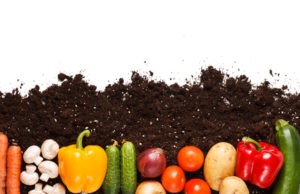 Moving to the Twin Cities from the arid desert, few things felt like home. The weather, the accents and the beards among top culprits. I found comfort in Jucy Lucy’s and, for a 20-something professional on a budget, nothing was more refreshing than an ice cold Grain Belt Premium. Nothing about my life so much as hinted a future of kosher lifestyle, until I met my husband. His smooth-shaven face and flannel-free attire was all it took to catch my eye. What I deemed certain to become a promising collision came to a screeching halt on our first date. As I raved about my obsession with Matt’s Bar and all its meaty-cheesy goodness, the potential for a future together slowly dissipated like candles on a Menorah. Unwilling to lose the only eligible bachelor in the city without a penchant for tight pants and fixies, I made the choice to trade-in cheeseburgers and beer for challah and a glass of Manischewitz.
Moving to the Twin Cities from the arid desert, few things felt like home. The weather, the accents and the beards among top culprits. I found comfort in Jucy Lucy’s and, for a 20-something professional on a budget, nothing was more refreshing than an ice cold Grain Belt Premium. Nothing about my life so much as hinted a future of kosher lifestyle, until I met my husband. His smooth-shaven face and flannel-free attire was all it took to catch my eye. What I deemed certain to become a promising collision came to a screeching halt on our first date. As I raved about my obsession with Matt’s Bar and all its meaty-cheesy goodness, the potential for a future together slowly dissipated like candles on a Menorah. Unwilling to lose the only eligible bachelor in the city without a penchant for tight pants and fixies, I made the choice to trade-in cheeseburgers and beer for challah and a glass of Manischewitz.
Making the decision was the easy part, following it was the challenge. For me, going out to eat posed too many hurdles to make it worthwhile. Even grocery shopping became an obstacle course of processed land-mines and meaty distractions. Enter eco-kosher. Like a “For Dummies” guide to conscious eating, the term resonated with me in a way religion hadn’t yet accomplished.
Eco-kosher, the latest buzz word in devout Jewish practices, combines traditional Jewish dietary laws with global awareness. For those who are already acclimated with a kosher lifestyle, incorporating sustainable eating habits is a simple change, as green eating is naturally compatible with Kashrut in its consumption of natural, unprocessed fresh fruits, vegetables and grains. Now, the kavannah for practicing kosher consumption also includes addressing environmental concerns including industrial agriculture, global warming and fair treatment of workers.
Interested in joining the eco-kosher movement with pareve ingredients picked fresh from your own backyard? Read on.
Sustainable Grounds
Start with a clean foundation by using nutrient-rich organic soil. Refrain from chemically fertilized soil which defeats the purpose of naturally grown produce. instead, treat soil with animal manure or compost material. For utmost cost and environmental efficiency, composting presents the best option. A typical compost pile can be divided into “browns,” which include straw, branches, and leaves, and “greens” like grass clippings and kitchen scraps. Greens provide nitrogen and include common food items otherwise tossed away like eggshells and carrot tops. Compost tumblers (also called drum composters) simplify the process and are insulated for colder climates, plus they’re easy to maintain with oiling, tightening and replacing simple parts such as o-rings or door hinges after a couple of seasons.
Green Toppings
Mulch is an excellent additive to a compost pile. But, even if you opt for organic soil, mulch is not only visually appealing but an eco-friendly gardening must. This gardening staple is known to help reduce water consumption by reducing evaporation and retaining water within the soil. As mulch breaks down, it provides nutrients to the soil, which helps reduce the need for additional fertilizers. The National Wildlife Federation stresses the importance of using mulches from sustainable forestry practices that are free from pests and diseases. Not sure what to choose when shopping for mulch? Take the guesswork out of it and create your own organic mulch. Stump grinders make it easy turn existing tree stumps and branches into wood chips for the yard.
Seasonal Picks
Minnesota gardening has its challenges. Frigid climates make it nearly impossible for novice gardeners to keep the faith on their crops. Spring and Summer offer ideal temps and give beginners a boost of confidence to continue year-long planting efforts. Once you’ve established proper knowledge and systems for raising produce, its all about picking the right seeds for the season. For a truly green experience, use green supplies like recycled plastic gardening gloves and hit the dirt. Here’s what fares well in the Twin Cities’ weather:
Fall/Winter: Options are limited but not sparse. Consider hardy crops like kale and cabbage, which are known to survive in bitter seasons. Broccoli is another strong veggie fit to tough out winter frosts.
Spring: Mid-April marks the beginning of prime planting season. Get stared with lettuce, cauliflower, brussels sprouts, carrots and cabbage that can handle the Winter remnants and last through the change in seasons.
Summer: Warm-weather brings a new batch of crops ready to grace your garden. Starting in May, beans, cabbage, cucumbers, peppers, potatoes and squash are not only summer favorites but also do well in our continental climate.
Vicki Haas moved from Arizona to Minneapolis 8 years ago to accept a position at the University of Minnesota. She now works as an adjunct professor while she pursues her passion as a novelist.

